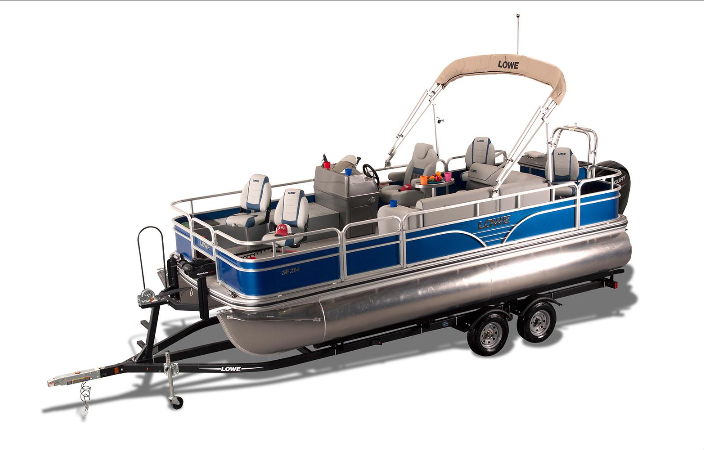
Rocketoons, another name for Performance Pontoons, provides speeds up to 50 mph. They can be outfitted with 1 to 3 engines that pull 300-horsepower each. You can make a quick trip down the river in one of these flying machines.
Watersports Pontoons are designed with water skiers in mind. Splashy in color, they have all the storage, brackets, and mounts to carry your tubes and skies. A 350-horse engine delivers speeds up to 60 mph for excitement and fun.
Luxury Pontoons bring perfection to an outing with comparable amenities of a yacht. Top-notch upholstery seating, stand-up bars, awesome LED lighting, and creative fencing schemes add sophistication to a comfortable ride.
Say goodbye to John Boats with the Fishing Pontoons of today. Tons of deck space for live wells and fishing gear, these boats have low draft for maneuvering in shallow water.
Family Fun Pontoons take pleasure to a whole new level. Wrap-around-seating, great ergonomic layouts, and enough speed for tubing, make these cruisers a must-have for family outings.
You won’t find cheap in the Value Pontoons that are designed as a basic model. Without all of the frills of the higher-end boats, they are sturdy and comfortable for enjoying the water without draining your pocketbook.
Where to Find Pontoon Boats for Sale
While the Minnesota lakes and Great Lakes of Michigan were the starting points of pontoons, the enjoyment of these boats have spread nationwide. Pontoon boats for sale can be found almost anywhere there is a body of water. The southeast has become a hot spot for pontoons with beautiful lakes throughout Georgia, North Carolina, South Carolina and Tennessee. Dealers with new and used boat inventory have a wide variety of well-maintained boats and great boat financing for any category. Young Harris Water Sports has a One-Stop boat sales, boat rental, and marine center. Looking to buy or sell a pontoon boat? Live in the Hiawassee GA area? Young Harris Water Sports can help with all your watercraft needs. We also offer a full brokerage service and can even market your boat throughout the southeast. Not to mention we also offer pontoon boat storage, pontoon boat detailing, and pontoon boat service.
Vacation Fun with Pontoon Rentals
If you are planning a vacation in one of the many scenic areas in the state of Georgia, then pontoon boat rental is an affordable solution. Imagine renting a boat at Lake Blue RIdge in the Chattahoochee National Forest surrounded by the nature and pristine water. A watercraft specialist will deliver your boat and make sure that you are comfortable in handling your pontoon. Once you and your family are out on the water, it will be an experience to cherish for years to come. Other beautiful vacation spots with available pontoon rentals include Lake Burton boat rental, Lake Lanier boat rental or Lake Keowee boat rental.
Regardless of your specific lifestyle, pontoon boats have become a great way to enjoy our nation’s waterways. Substantial in structure, comfortable with seating, and with different amenities, the pontoon boat has proven to be a favorite way to spend a relaxing or invigorating vacation.
For all your accessories and/or vinyl flooring visit Pontoon-Depot's shop site.










